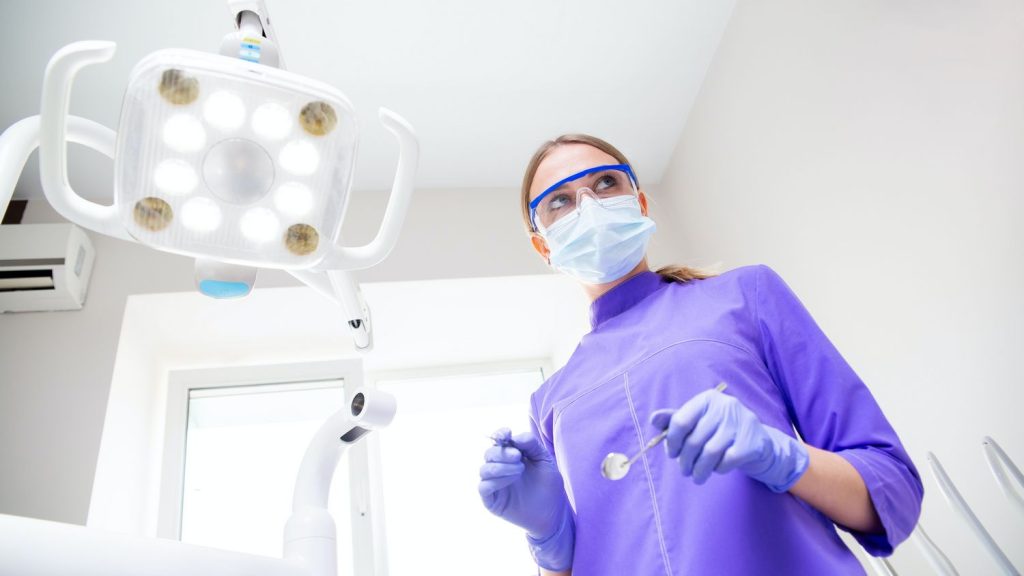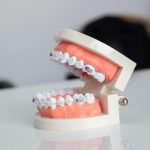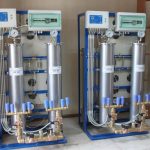Why are regular visits to the dentist recommended? Most people associate a visit to the dentist with pain and a specific smell. Usually, we decide to visit the dentist only when our teeth or other part of the mouth hurt. Pathological conditions of the teeth are our body’s response to bacteria penetrating deep into the tissues.
The first sign that something is wrong with our teeth is caries. If left untreated, it can quickly lead to more serious and painful conditions. As a result of tooth decay, harmful bacteria accumulate on the surface of our teeth. Over time, they will break through the entire thickness of the enamel and dentin. Then they reach the tooth cavity, thanks to which they gain access to the pulp. It is a type of highly blood-supplied and innervated tissue responsible for nourishing the teeth and feeling within them.
- https://pspi.org.pl/szkolenie-stanowiskowe-bhp-kto-przeprowadza/
- https://www.lovelove24.com.pl/plytki-drewnopodobne-jak-klasc/
- https://www.9478.pl/co-to-znaczy-ozonowanie/
Types of dental pulp inflammation
When bacteria come into contact with the pulp tissue, it becomes irritated. It may be reversible or irreversible. In the first case, there is no spontaneous pain. Instead, the patient comes to face prolonged pain provoked. In such a situation, prompt intervention by the dentist is necessary. First, it removes caries, and then it remains to use a special medicine – odontotropic material. Namely, it is a material that stimulates the pulp to use the next layer of dentine. This is to effectively separate the pulp from stimuli from the oral cavity and filling. This treatment is called biological treatment. With its help, the dentist manages to keep the tooth alive.
If ignored, such inflammation becomes irreversible. The pulp of the tooth was largely colonized by bacteria, and the condition worsened. The basic element is the swelling of the tissue, and since the pulp is enclosed in the hard tissues of the tooth, the pressure in it gradually increases. This leads to compression of the nerves and thus very strong pain. In turn, pressure on blood vessels disturbs blood circulation and causes tissue necrosis. All of this could have been avoided if we had decided to visit the dentist early enough. At some point, a sick tooth will stop hurting us. Contrary to appearances, this is not a good sign. This is a signal that the tooth pulp has completely died and has become an ideal habitat for multiplying bacteria. If we still have not undergone endodontic treatment and the tooth has not been extracted.
- warszawasushi.waw.pl
- miod24.com.pl/pl/c/Miod-Nawlociowy/25
- szkola-muzyczna24.com.pl/nauka-gry-na-skrzypcach-lodz/
Consequences of untreated pulpitis
Some time after the pulp dies, we may begin to experience spontaneous pain, which may be accompanied by the feeling of the tooth blowing out of the socket. Our lymph nodes will also start to respond. This is a signal that the bacteria have begun to spread beyond the dead pulp tissue of the tooth. In response to these microbes, our body begins to accumulate serous exudate — protein seepage from blood vessels — in the periapical area. This is a sign of acute serous inflammation. If we ignore this and do not go to the dentist, abscesses will start to form in our mouth. Inside it accumulates pus, i.e. brown or yellowish exudate. It consists of dead leukocytes, protein fluid and a mixture of various bacteria and cells. Its formation results from the release of white blood cell enzymes.
What types of abscesses can we encounter?
There are three most common types of abscesses — periapical, subosseous, and submucosal. Regardless of the type, if they are not emptied, they can increase in volume over time. They are also very painful and the feeling of pain increases when lying down. Purulent inflammation is often accompanied by malaise and fever. As the abscess begins to grow, it can break through the bone under the periosteum over time. It then begins to tear this highly innervated membrane from the bone until the periosteum ruptures. After the abscess breaks through, the intensity of the pain decreases, but there will be a strong swelling of the face. Pus begins to collect in the loose soft tissues, and the fever continues. In such a situation, we will not be able to visit the dentist. He will have to incise the abscess to release all the pus.
Granuloma and radicular cyst — more serious consequences of untreated pulpitis
Granulomas are formed as a result of chronic infection of the tooth pulp. The bone located near the apex of the dead tooth is replaced by granulation tissue. This, in turn, is surrounded by a connective tissue capsule. The granulation tissue develops under the influence of bacterial toxins from the untreated tooth. Over time, however, they begin to die off in their central part. Then they transform into the so-called root cyst. With its growth, pathological fractures of the jaw may occur. To avoid all this, it is enough to visit the dentist’s office regularly.









More Stories
Hair transplant – find out what it is and what methods are available
Investment in sea containers – can it bring us savings?
Aesthetic medicine – the basics about it, which we must be familiar with